Monochrome or patterned translucent tulle for the kitchen can be a perfect decoration for a window opening. Decorative effects of fabric will provide ease, ease of registration, original, but at the same time - comfortable atmosphere. It is clear that the textile design must fully comply with the concept of the room. But the texture and color of the material can be anything - tulle curtains will be both a great neutral background, and an amazing bright color spot. In addition, this decor can be easily sewn with your own hands, getting an economical and stylish solution.
Types of tulle curtains for the kitchen and their photos in the interior
Tulle curtains for the kitchen can have the following look and design:
- Net tulle is one of the most common and traditional types of tulle for the kitchen. Net tulle goes well with wooden kitchen set in classic, sea, as well as in rustic, Provençal and other “village” styles, especially if it is a mesh veil with guipure inserts.


Netted tulle differs both in the type of fibers and in the size of the cells. You can pick up material with air or tighter weave.

Materials can be both natural and synthetic. In the first case, it is cotton, silk or linen, and in the second, polyester, nylon or nylon.

You can also sew curtains made of tulle mesh with your own hands by combining it with linen. Also, the mesh fabric is just made for marine decor, you can decorate it not only with ropes (as shown in the photo below), but also with shells, starfish, antique keys, etc.

- On the grommets - a convenient and stylish solution. Such curtains are often sewn of organza, rings are made of metal or plastic. Thanks to them, kitchen tulle can easily slide along the eaves and form uniform folds-waves.




- An unusual solution in the design of the window would be a combination of organza and “noodles” or simply curtain threads.

Strong threads up to 0.5 cm wide are chosen for such products, and pearl beads are often used as their jewelry. This type of tulle does not tangle, does not fade in the sun and does not fade, but it must be washed in a bound state. You can pick up identical threads for the window and door opening - this design will make the room separate but harmonious.

- Often tulle curtains in the kitchen are complemented by lambrequins - soft or hard.

Then a light organza canvas decorated with lush folds and 2 cascades on the sides of the window opening are used.

A design with a soft lambrequin will make the space more solemn, while the hard will add severity to the atmosphere.

The spectacular pelmet makes the window complete and allows you to adjust its visual proportions.

- Tulles-veils are perfect for both complex decors, and for concise, can be combined with curtains and perform solo. This is probably the most universal window design, as it fits into the interior of any style from classics before hi-tech.



White color of the veil, as seen in the photo above, is used in interiors most often. But it is available in a very wide range. For example, plain veils have 12 standard shades.


In addition, veils can be used as a base for patterned organza and other tulle fabrics.


To better understand the materials and weaving of tulle from natural and synthetic fabrics, we recommend to watch this video:
How to choose the length
Are you going to go to the studio, buy ready-made tulle, or want to sew organza curtains with your own hands, you need to first determine the length and width of the product. There are several basic options here:
- Classic - the length of the product from the eaves to the floor. It looks spectacular, but for small kitchen such a tulle would not be practical.

- The shortened version is more convenient, but no less appealing. In any case, it does not require particularly complex care. This design involves the use of canvas, only 20 mm longer than the edge of the window sill.


To make tulle curtains, for example, made of organza or cotton, become more interesting and wear less along the bottom edge, sew a contrast border to them.
- One of the most traditional solutions for classic and "country" cuisine is the arch of tulle. The arch allows the sill to remain open and indispensable in case the window is located additional tabletop. The organza arch is formed by a decorative fold or by intersecting 2 triangular canvases. Here you can even apply 2 types of fabric, similar in texture and color.

Tulle Rules and Tricks
What should be the design of tulle to match the overall design of the kitchen?
- If you can not decide on the color of tulle curtains, then feel free to choose universal light colors - white, beige, gray;
- Make a start from the color of the furniture and furnishings in the kitchen - if a warm subtone prevails, then the curtains should be “warm”, and vice versa. For example, in the following photos you can see that the white color can be different: in the first interior, the cold temperature prevails in the design, and in the second - the warm one.
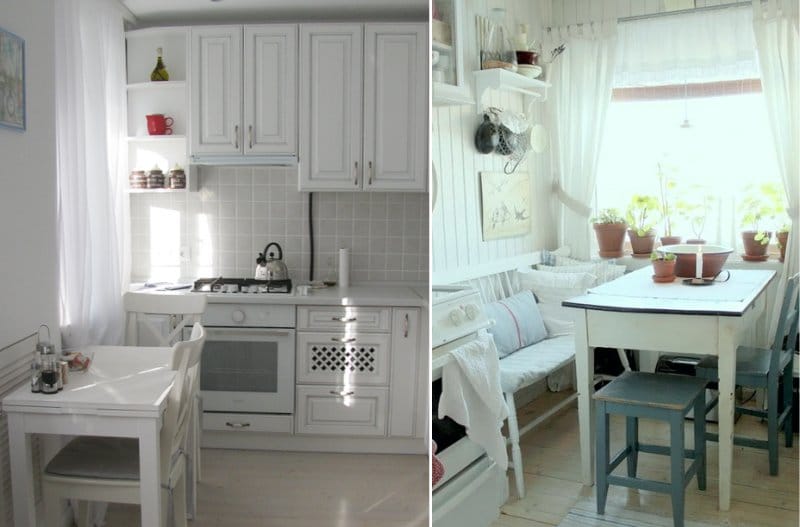
- You can choose the color not only in the color of the walls and the headset, but also in the color of kitchen textiles - tablecloths, pillows, upholstery of chairs.

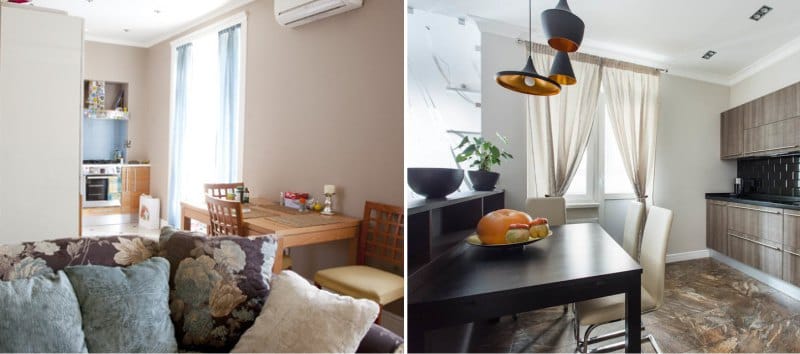
If the kitchen is located on the north side, then you can “warm” it with the warm color of the curtains - milky, beige, yellow, orange. If the opening goes to the south, then the suitable shades of tulle will be bottle green, pink, snow white or turquoise. However, if the room has a lot of light, then you can choose the material of any dark tone.
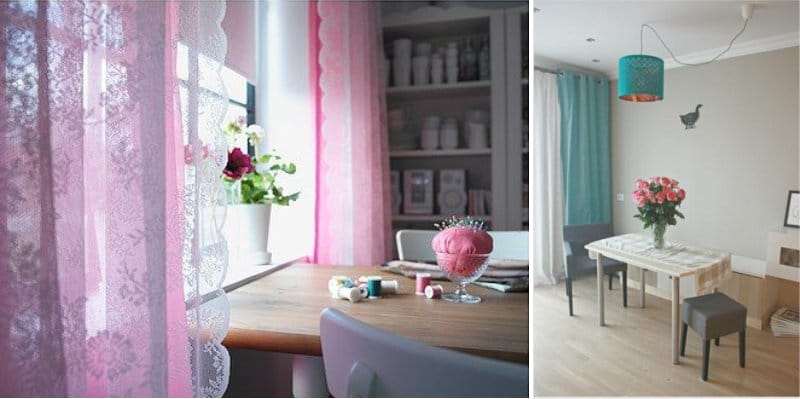
- The smaller the kitchen area, the simpler and easier the tulle design should be - without large patterns, draperies, luster, volume and colorful decor, and its color, of course, should be light (but not necessarily white);

Read more about the combination of colors in the kitchen interior. here.
- Low ceilings will visually make higher than a striped curtain, with a vertical pattern and a mustache. In addition, in the "low kitchen" the cornice is installed under the ceiling;

- Most often for the kitchen use the combined options of textile decoration - tulle complement the curtains, jalousie, roman or roller blinds, etc. First, from the point of view of design, such combinations look richer and more spectacular, and secondly, they do it in order to sometimes shade the room;

- The smaller the window, the brighter the curtains should be.
How to sew tulle curtains yourself
Before you sew tulle into the kitchen with your own hands, you need to determine the style of the product and the method of its fastening. After that, choose the length - to the floor or just below the window sill.
Before sewing your own hands you need to make a calculation, taking into account the coefficient for the folds - it will be equal to 1.5-2.5. It is clear that the larger the selected coefficient, the larger the folds will end up. Metric area of fabric is defined as the length of the eaves, multiplied by the selected factor of + 7 cm on the allowances.
Before you begin to sew tulle with your own hands, the material must be decaturated - moisturize and iron. This avoids its shrinkage.
If you decide to sew a simple model of curtains with your own hands, then you can cut the fabric straight along the fabric, leaving the seams necessary for the seams. First, the side seams are processed, then the bottom is stitched (if necessary, a weighting cord is placed here), after which a band is sewn or eyelets are fastened. The finished curtain is placed on the eaves and additionally decorated. The result is stylish and easy-care lace curtains.
How to attach the grommets to the tulle with your own hands, see the following video:
How to sew a curtain tape, see in this video:
- Curtains for the kitchen: color, material, look and style
- Curtains-threads in the kitchen - the choice, care, making their own hands
- Lambrequin for the kitchen - how should it be and how to sew it?
- How to choose the perfect short curtains for the kitchen
- Knitted curtains for the kitchen
- Guide to choosing a curtain rail for kitchen curtains and installation instructions






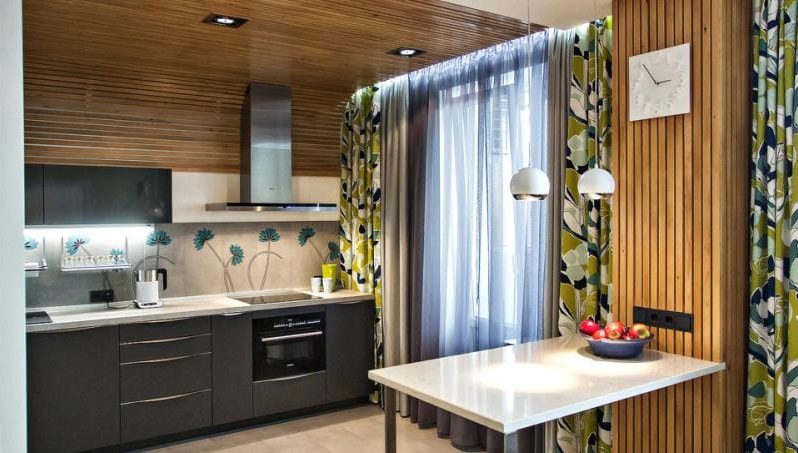
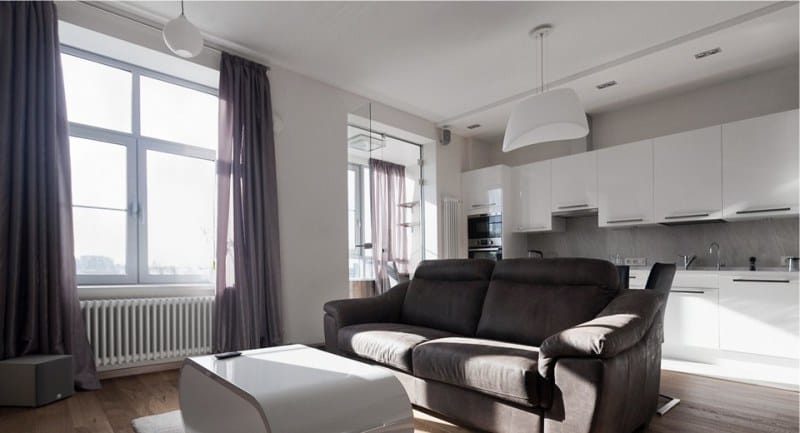

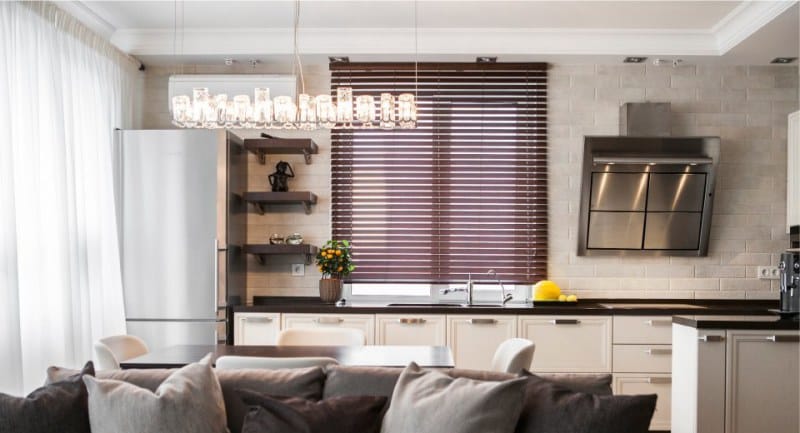



 (Rate the material! Already voted:15 average rating: 4,33 from 5)
(Rate the material! Already voted:15 average rating: 4,33 from 5)